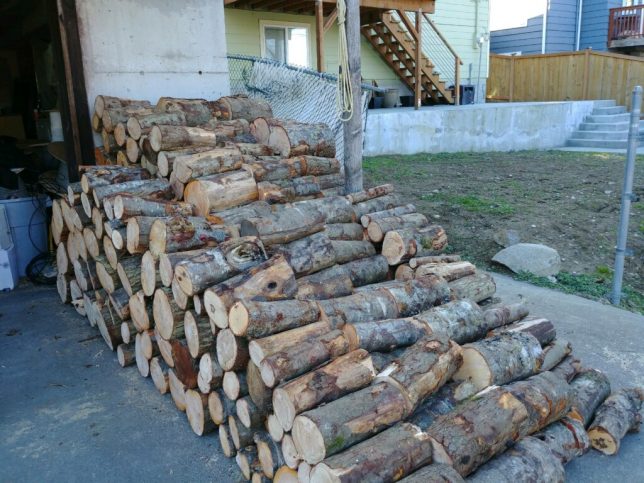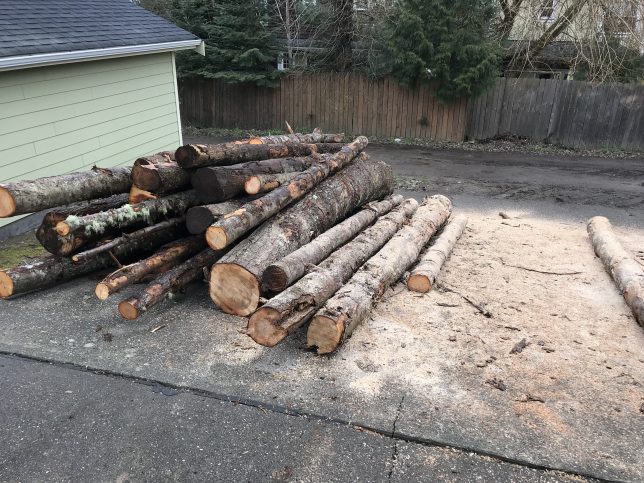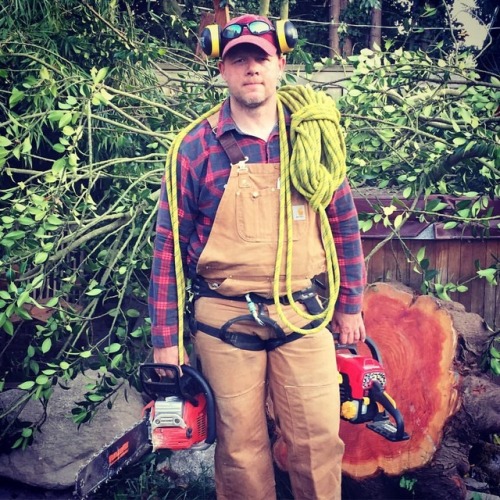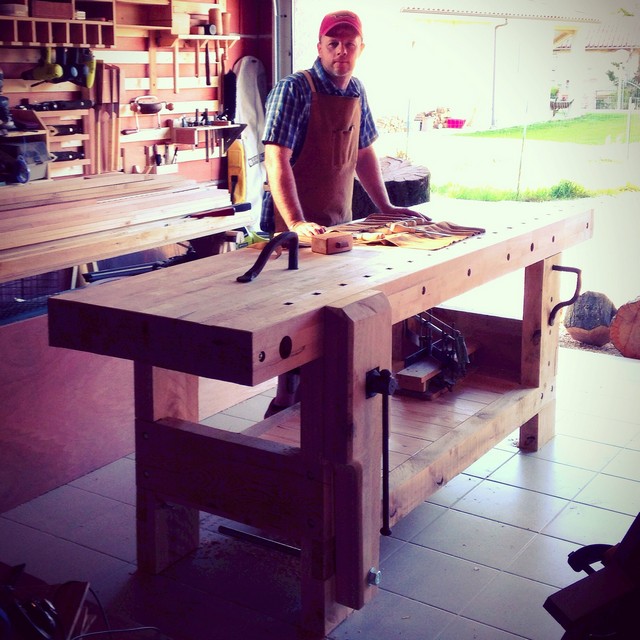Every homeowner in the middle of a city really needs 3.5 chainsaws. Well… maybe you only need 1, but having multiple saw options makes things a lot easier when a truck load of logs shows in in the driveway or when a tree in your yard needs to come down.
I have a neighbor who heats with wood and buys a couple loads of loads (5-8 cords) of wood a year. He bucks the logs and does all the splitting in his driveway. He is a great guy and hooked me up with a cord+ of free maple (and ¾ a cord of cedar for camp fires) last year. We have heated the house during all the really cold and snowy nights this winter with that free wood. As a way to be a good neighbor and to say ‘thank you’, I spent a few hours one recent weekend helping him cut a load of fir into rounds and prep for splitting. I took one saw over to his place with a bit of gas and bar oil and cut for 3+ hours on one chain sharpening. That would not have been possible with oak, cherry, or walnut, but the dry-ish fir cut like butter.


Speaking of saws, I currently have a stable that includes a semi-shitty Homelite 16” bar that was a $10 garage sale score that I couldn’t pass up. I put a good chain on it and use it for limbing trees, blackberry vine annihilation, and general yard/garden jobs. Years ago, I was given a battery powered Homelite polesaw when a neighbor moved away that I keep sharp and use it 3-4 times a year. The long reach makes pruning and trimming branches along the fence a breeze.
I scored a free (paid for with sweat equity) 50cc Dolmar last year, which is a fine little German saw, and it is my go-to for lopping up logs/firewood rounds and for lathe bowl prep. The Dolmar is probably my favorite saw currently and the very first one I will take if I have to lend a hand with a tree or firewood in the neighborhood. The beast in my quiver is a new Husqvarna 576 that I paid full retail price for and meant only to be used for serious ‘bidnes like dropping trees or for milling slabs. I have two different length bars and three types of chain for it: Rip, felling, and skip. When the chain is fresh, you can set this baby on a log and it will eat through it just using its own weight.
You will find all sorts of uses and projects that require a chainsaw when you own one: For instance, instead of paying an arborist serious $$ last year, I dropped a 40’ tall holly tree that stood on the fence between me and a neighbor. I had to put on a harness and rope up to top the thing, which I have done many times and once did it for a living for a short time.
This time I was like 4 months post-op from hip reconstruction though and my wife forbade me from “doing anything stupid” before she left the house to run errands. I seized the opportunity and started the cutting. She came home earlier than I had expected and caught me 20’ up in the tree, sitting in the harness with the saw running. Apparently, that was “something stupid” and I got in trouble. No, like real trouble and she had a fit in front of all my friends and neighbors. I had to go inside for the day and wasn’t allowed to come out and play with the other 40-something children.

Couple of quick points:
A chain saw will maim or kill you if you do not use it correctly. If you have never operated one, take a class or find a mentor, not Bob down the street that drinks beer in the front yard all summer and has a dusty saw up on a shelf in the garage. Someone that that handles a saw often and who is super safety conscience.
Buy and use safety equipment:
- Saw chaps/pants
- Helmet
- Ear protection
- Safety glasses AND a face shield. Wear at the same time. Really.
- Leather Gloves
- Good boots – preferable steel toed ones with
thick lugged soles. I am a Danner man, but to each his own. - Know your saw, read the fuel and oil requirements – keep the manual in your shop/garage where you can refer to it.
- Buy a gallon of bar oil.
- Grab a chain sharpener and a guide and try to sharpen your chain BEFORE it needs it.
- Buy a gas can for your fuel/oil mix. Label it and only use it for that. a gallon can is the most practical.
- YouTube is your friend on a sharpening how-to.
- Buy a spare chain when you buy your saw and write the part number on the manual – the one that you keep as noted above.
